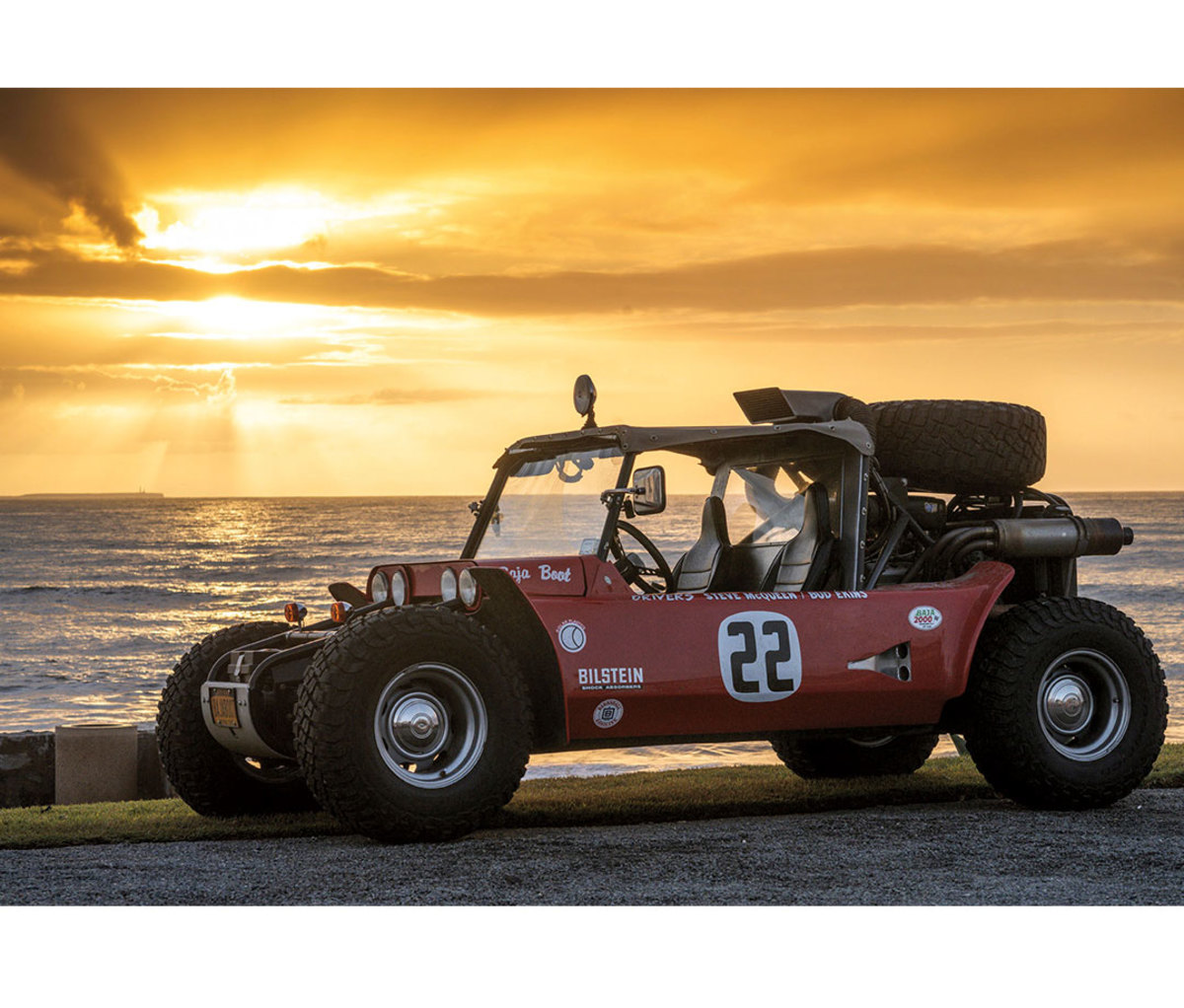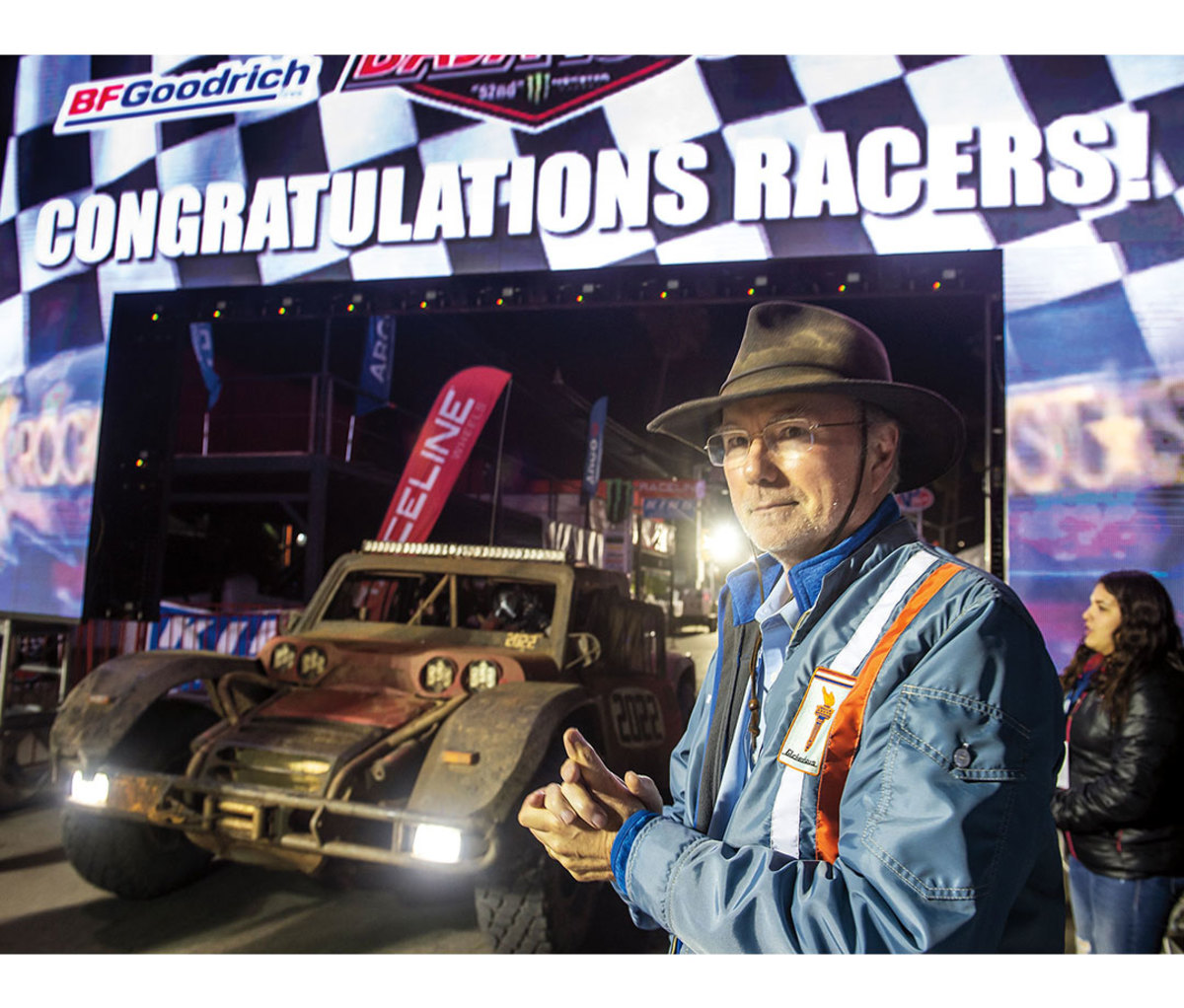When the clouds of grit finally settled at the 2019 Baja 1000, the grueling off-road race through the Baja California Peninsula in Mexico, an unlikely star emerged: the Boot, an all-terrain vehicle from SCG, a manufacturer you’ve probably never heard of. With just 47 seconds left before the 800-mile race’s 34-hour cutoff, the fangy, bug-eyed, scarlet red Boot crossed the finish line, wearing 420 pounds of mud, and defeating the only other vehicle in its class: a prototype Bronco R from Ford. The tiny SCG—Scuderia Cameron Glickenhaus, a low-volume manufacturer founded and run by the filmmaker and financier James Glickenhaus—had beaten one of Detroit’s Big Three.
“Frankly, I think Ford was a bit shocked that we beat them by 270 miles in the class,” says Glickenhaus, speaking in cogent, animated bursts that belie the builder’s 70 years. Though based in Danbury, CT, Glickenhaus plans to scale up his California facility’s production of the $287,500 4-Door Boot. The 2-Door, currently available for $258,750, is street legal in 49 states (soon, 50, he says) and sold through specialty luxury dealers such as Manhattan Motorcars. It’s just one of an expansive list of projects from Glickenhaus, including the SCG 007, a hypercar he plans to enter in the 24 Hours of Le Mans in 2021—with the audacious goal of gaining the first overall win for a car made in America in over 50 years.

But back to Baja: Glickenhaus and his race team are preparing for another run-in with Ford during the 1000’s 2020 iteration this November (at press time, the race was still scheduled). Sure, it’s a rivalry—but it’s also R&D. Entering the Boot in one of off-roading’s most demanding and storied races isn’t just a party trick, Glickenhaus says—it’s one of the most efficient ways to suss out a vehicle’s true capabilities: “It’s like you put a hundred thousand miles in a day on it, subjecting it to forces and temperature extremes, giant boulders. You tear it down afterward and see if anything broke.” Those lessons led to material improvements for the 2020 model, from power to suspension upgrades.
Essentially, the Boot is a dune buggy that has gone through some kind of Avengers-worthy battle-hardening. It’s based on Steve McQueen’s Baja Boot—the very vehicle the actor raced in the late ’60s—which Glickenhaus bought at auction in 2010. That vehicle was designed by Vic Hickey, a General Motors engineer who found success by outfitting the low, tubular-framed Boot with a robust suspension (for its time) and a mid-mounted GM V8.
“YOU FEEL THE GHOSTS OF THE ’60S AND STEVE (MCQUEEN) DRIVING THE THING,” SAYS GLICKENHAUS.
Glickenhaus’ modernized stock version of the Boot also derives its power from a GM V8. Choose either an LT1 or LT4 engine—originally developed for the Z06 Corvette—mated to an automatic transmission and fed to giant 39-inch tires with a heft that ensures nearly all of its horsepower (460 for the LT1, 683 for the LT4) are applied to the ground. For the latter engine, Glickenhaus estimates a zero-to-60 time in the low three seconds, wildly impressive for a vehicle that’s nearly 5,550 pounds. Of course, the Boot wasn’t intended as a street racer. Enormous shocks and springs give it up to 23 inches of suspension travel, meaning the vehicle can float over boulders and bumps, nose-up, like a boat.
The modern Boot not only outpowers McQueen’s model, it also boasts a cupholder, critical for pavement-not-required Starbucks runs. The 4-Door model features backseat suicide doors, which hinge at the rear—“because they’re cool.” The rear seats are elevated, stadium style, to give those second-row passengers a better view, and ward off carsickness, a legit problem for off-roading with friends.
The Boot is a showy thing, outrageous but functional, built to be enjoyed rather than babied.

“I just got so sick of poser cars,” says Glickenhaus, referring to the recent wave of luxury and sportscar brands branching out into sport-utility vehicles, including Lamborghini, Aston Martin, Bentley, and Rolls-Royce. These vehicles, Glickenhaus says, aren’t fit for anything more rugged than the driveway of a polo club. That’s a place where a Boot, you would assume, might feel out of place.
“This is the real deal. If the apocalypse happened—which, it seems like it might, the way things are going—you’d want to be in this thing,” says Glickenhaus. “I think, because of COVID, the market’s changing. You’re going from people buying (an exotic car) to impress people at a cafe on South Beach, to people buying it because they are going to use the frigging thing.”
from Men's Journal https://ift.tt/2Ive6JX
via IFTTT










0 comments:
Post a Comment